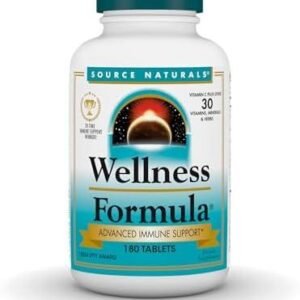In an age where dietary trends come and go like the changing seasons, one nutritional powerhouse steadfastly remains at the forefront of health-conscious eating: fiber. Often overlooked yet crucially essential, fiber serves as the unsung hero of a balanced diet, quietly orchestrating a symphony of physiological benefits that resonate throughout the body. From promoting digestive health to stabilizing blood sugar levels, fiber’s multifaceted roles are not only vital for maintaining overall wellness but also for fostering a robust foundation for long-term health. As we delve into the realm of fiber-fueled health, we uncover how incorporating this humble component into our daily meals can transform our relationship with food and well-being. Join us on this enlightening journey, where we will explore the different types of fiber, the foods that pack the most punch, and how to effortlessly weave fiber into our diets, empowering ourselves to embrace a healthier, more balanced lifestyle.
Table of Contents
- The Vital Role of Fiber in Digestive Wellness
- Diverse Sources of Dietary Fiber for Optimal Nutrition
- Practical Tips to Increase Fiber Intake Easily
- Understanding the Impact of Fiber on Long-Term Health Outcomes
- In Conclusion
The Vital Role of Fiber in Digestive Wellness
Incorporating fiber into your diet is essential for maintaining a healthy digestive system. This powerhouse nutrient not only helps to regulate bowel movements but also plays a critical role in enhancing gut health. Fiber comes in two primary forms: soluble and insoluble, each contributing uniquely to digestive wellness. Foods rich in soluble fiber, like oats and fruits, dissolve in water and can aid in lowering cholesterol levels and controlling blood sugar. On the other hand, insoluble fiber, found in whole grains and vegetables, adds bulk to the stool and assists in preventing constipation by facilitating a smooth transit through the gastrointestinal tract.
To fully harness the benefits of fiber, it is recommended to include a diverse range of fiber-rich foods in your daily meals. Here are some key sources to consider:
- Fruits: Berries, bananas, oranges
- Vegetables: Broccoli, carrots, sweet potatoes
- Grains: Quinoa, brown rice, barley
- Legumes: Lentils, chickpeas, black beans
Moreover, a fiber-rich diet can enhance your overall health and reduce the risk of many chronic conditions. Consider the following comparison of fiber content in some common foods:
| Food Item | Fiber Content (grams per serving) |
|---|---|
| Chia Seeds (1 oz) | 10 |
| Lentils (1 cup cooked) | 15.6 |
| Broccoli (1 cup cooked) | 5.1 |
| Brown Rice (1 cup cooked) | 3.5 |
Diverse Sources of Dietary Fiber for Optimal Nutrition
Incorporating a variety of dietary fiber sources into your diet is essential for maximizing health benefits. Soluble and insoluble fibers each play unique roles in digestion and overall wellness. Some of the top sources of soluble fiber include:
- Oats: Rich in beta-glucans, a type of soluble fiber that can help lower cholesterol levels.
- Legumes: Beans and lentils provide substantial fiber and protein, making them excellent for satiety.
- Chia Seeds: These tiny seeds expand in water, aiding digestion and promoting feelings of fullness.
On the other hand, insoluble fiber is crucial for promoting regular bowel movements and preventing constipation. Excellent sources include:
- Whole Grains: Foods like whole wheat bread and brown rice pack a fiber punch that enhances gut health.
- Vegetables: Leafy greens, carrots, and broccoli are all fantastic for adding bulk to your diet.
- Nuts and Seeds: Almonds and flaxseeds not only contribute fiber but also healthy fats.
| Food Source | Type of Fiber | Health Benefits |
|---|---|---|
| Oats | Soluble | Lowers cholesterol |
| Whole Wheat Bread | Insoluble | Improves digestion |
| Chia Seeds | Soluble | Enhances satiety |
| Almonds | Insoluble | Provides healthy fats |
Practical Tips to Increase Fiber Intake Easily
Increasing your fiber intake doesn’t have to be a daunting task. Start by incorporating more whole grains into your meals. Swap out white rice for quinoa or brown rice, and choose whole grain bread over refined options. You can also easily add fiber-rich ingredients to your favorite dishes. Try these simple additions:
- Sprinkle chia seeds or ground flaxseeds on your smoothies and yogurts.
- Add beans to salads, soups, or even tacos for a satisfying boost.
- Top your cereals with fresh fruits like berries or bananas.
Another excellent way to amp up fiber is by snacking smart. Ditch the chips and grab a handful of raw nuts or a piece of fruit instead. Many snacks can easily be enhanced with fiber-rich ingredients. Consider these options:
- DIY trail mix: Combine nuts, seeds, and dried fruit.
- Veggie sticks with hummus or guacamole for a crunchy treat.
- Popcorn (air-popped) as a fun, fiber-filled snack.
Understanding the Impact of Fiber on Long-Term Health Outcomes
Fiber plays an essential role in promoting long-term health by influencing various bodily functions and reducing the risk of chronic diseases. Dietary fiber is classified into two main types: soluble and insoluble. Soluble fiber dissolves in water, forming a gel-like substance that helps lower cholesterol and regulate blood sugar levels, while insoluble fiber adds bulk to the stool, supporting digestive health. By incorporating a variety of fiber-rich foods, individuals can experience benefits such as enhanced gut health, improved metabolic functions, and a more balanced microbiome. Regular consumption of fiber has also been linked to reduced risks of conditions like obesity, type 2 diabetes, and heart disease.
To comprehend the full impact of fiber on health, consider its influence on weight management and satiety. Including fiber in meals can create a feeling of fullness, helping to control appetite and reduce overall caloric intake. Foods high in fiber often require more chewing and take longer to eat, allowing the body time to signal fullness to the brain. A diet rich in fiber can lead to healthier choices as these foods are often nutrient-dense and low in unhealthy fats and sugars. Here’s a simple overview of fiber-rich foods that can enhance your diet:
| Food Item | Type of Fiber | Fiber Content (per 100g) |
|---|---|---|
| Chia Seeds | Soluble | 34g |
| Brown Rice | Insoluble | 3.5g |
| Lentils | Soluble & Insoluble | 8g |
| Broccoli | Insoluble | 2.6g |
| Oats | Soluble | 10.6g |
In Conclusion
as we embark on the lifelong journey of nurturing our health, let us remember that fiber is not just a nutrient; it is a foundational element of a balanced diet. This powerhouse of nature has the remarkable ability to elevate our well-being, promote digestive happiness, and fend off chronic diseases. By embracing fiber-rich foods, we invite a colorful array of fruits, vegetables, legumes, and whole grains into our lives, enriching not only our plates but our overall health.
As you navigate your dietary choices, consider fiber as your steadfast ally, guiding you toward a vibrant and fulfilling lifestyle. With every bite, you’re not simply fueling your body; you’re investing in a healthier, more resilient future. So let us raise a toast to the humble but mighty fiber—may it serve as a cornerstone on which we build our vibrant health and wellness. Here’s to a life brimming with vitality, one fiber-rich meal at a time!





